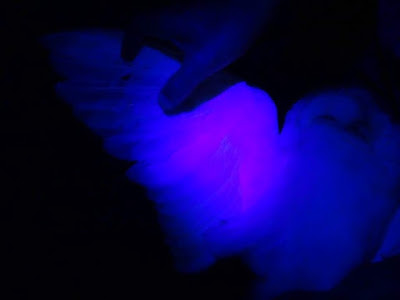TBZ was ringed in 2016 and was seen near Castropol on the northwest coast of Spain, so thanks to Gilberto Sánchez Jardón for the photo and for reporting it back to us.
As for Choughs, it was mixed news sadly... We visited three sites in West Penwith: the first produced two male and two female chicks, the second just a single chick and the last nest site was empty! This was rather surprising as the pair had been showing all the usual behaviours seen when feeding young, but the nest (below) was very clean and obviously hadn't held any chicks.
Thanks to Alan and Christian who came along to ensure that we safely got into these sites, so do check out their Rope Geeks page on Facebook. Also thanks to Robbie Phillips for the photos.













